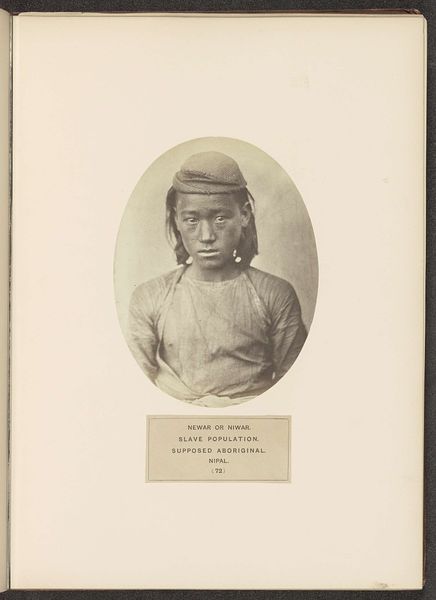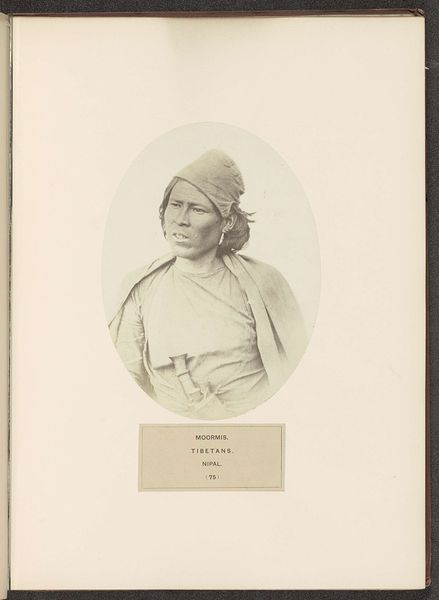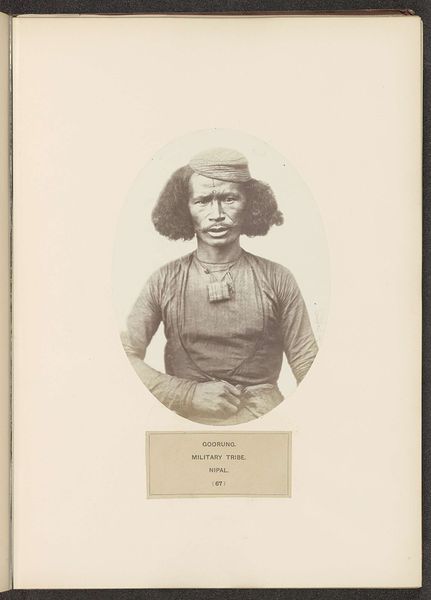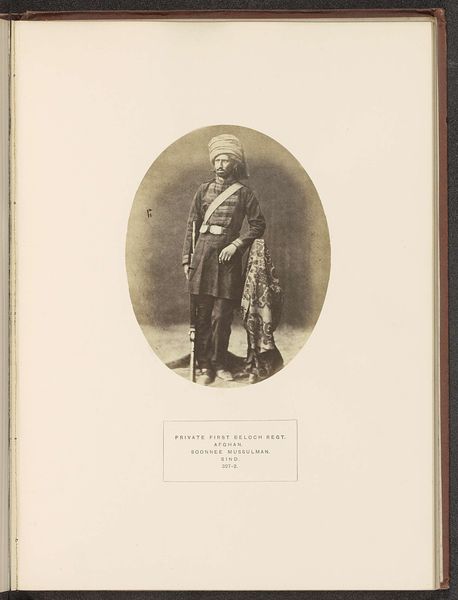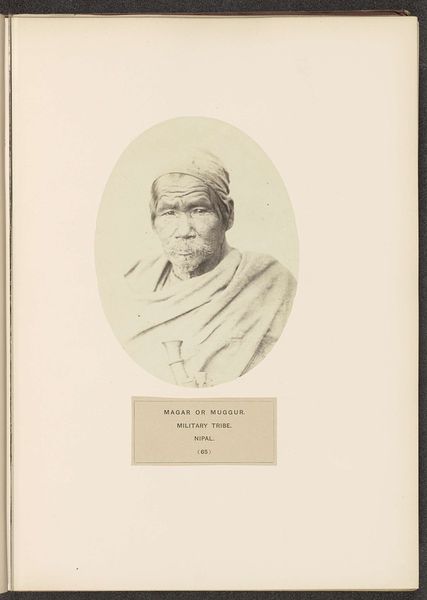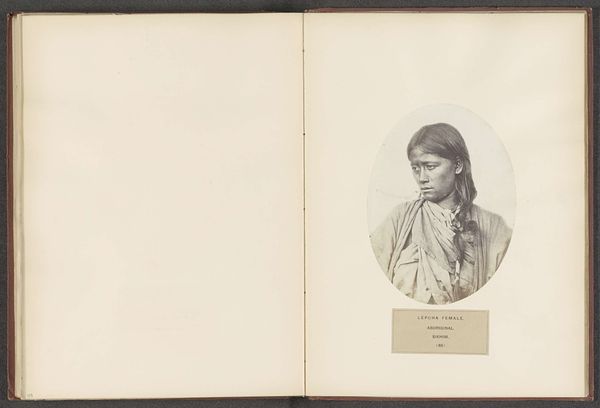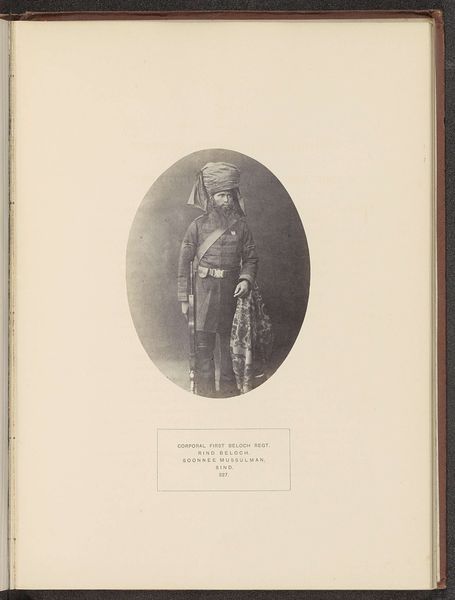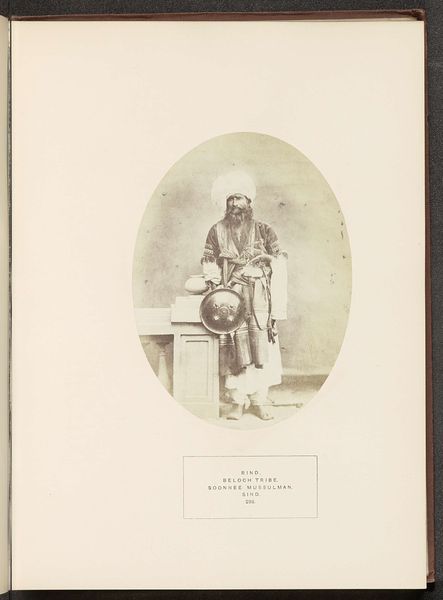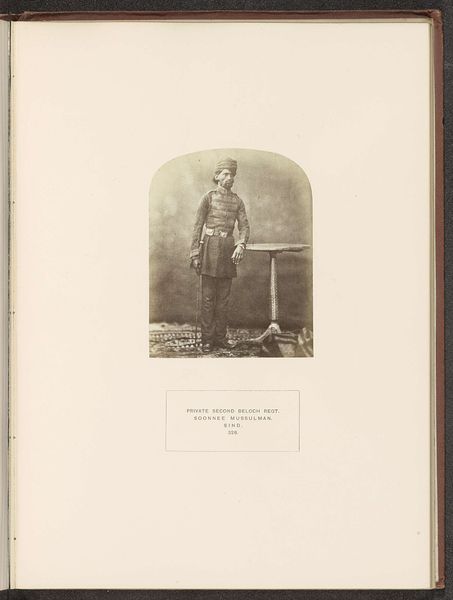
photography, albumen-print
#
portrait
#
asian-art
#
photography
#
albumen-print
#
realism
Dimensions: height 174 mm, width 129 mm
Copyright: Rijks Museum: Open Domain
Editor: Here we have a photograph entitled "Portret van een onbekende Khas man uit Nepal," or "Portrait of an Unknown Khas Man from Nepal." It was created before 1868 by Benjamin Simpson, using the albumen print process. The subject’s gaze is striking. What can you tell me about it? Curator: Considering this portrait, I immediately think about the materiality of albumen prints. This process involved coating paper with egg whites, making it highly receptive to light-sensitive chemicals. Knowing this was created for ethnographic study informs our understanding. It brings forth questions about image-making: who had access to the materials, to the photographic equipment, to the means of circulating these images? This wasn't just art; it was information gathering. Editor: That’s a great point about the process as information-gathering. Does knowing it’s an albumen print change how you see the sitter himself? Curator: Absolutely. Think about the subject, likely approached as a representative of his tribe. How complicit was he in the making of his own image? We have to acknowledge the power dynamics inherent in photographic practices of that era. It suggests unequal labor relationships within a colonial context. How does the consumption of this image reinforce or challenge those inequalities? Editor: So it's not just about the finished photograph, but all of the implications regarding material access and unequal power dynamics inherent in how it was created. Curator: Exactly. It encourages us to deconstruct assumptions around who is empowered to create and circulate images. These photographic materials carry layers of colonial enterprise. Understanding that is fundamental to truly ‘seeing’ the portrait. Editor: I never considered how the materials themselves could speak volumes about power dynamics and production in an ethnographic photograph. Curator: Looking closer at artmaking often exposes a world of social and economic narratives often left out.
Comments
No comments
Be the first to comment and join the conversation on the ultimate creative platform.
